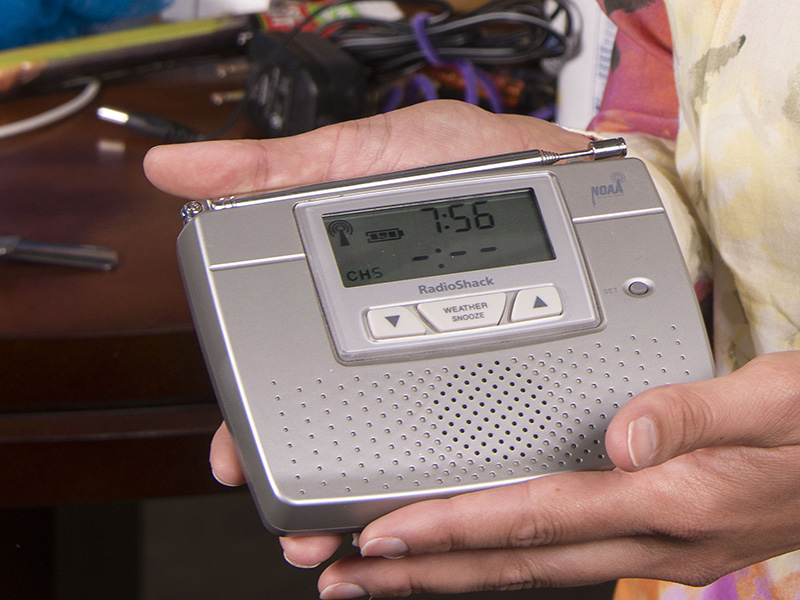Get in the Know When Severe Weather Looms
When dangerous storms are brewing in the Oklahoma skies, families

need an accurate read on weather conditions. Technology makes it easy to call up weather forecasts and warnings with the swipe of a finger or click of the mouse, but families still need to sort through all the available sources and identify the most credible, said Gina Peek, assistant director, Oklahoma State University Extension/Family Consumer Science program leader and associate dean for Extension and Engagement in the College of Education and Human Sciences
“Obviously you can check the traditional sources like television or radio broadcasts for regular updates, but you have other options, too, for getting accurate, real-time information about the weather,” Peek said.
In addition to traditional television broadcasts, some local news stations also post up-to-date severe weather warnings and watches online and share details via social media platforms. A digital weather radio with battery backup is another good source to have on hand.
“Weather radios may not be used as frequently as other media for updates on severe weather, but they’re just as reliable, especially during the night or when you are in a remote location,” Peek said.
Smartphones, e-tablets and other such devices can be helpful in keeping an eye on threatening storms. For example, the National Weather Service provides timely updates via its website, app and social media platforms.
Community warning sirens are designed to alert anyone outdoors that potentially hazardous weather is nearby.
“It’s important to know when sirens are activated in your area because each community’s policies can be different,” Peek said. “Take cover immediately if you hear the sirens, and don’t try to outrun the storm.”
Finally, even with all the technology available, sometimes a heads-up from a friend or family member can still be the most effective way to encourage someone to take cover.
“The National Weather Service and social science research shows that a warning from a friend or family member is the key to getting someone to seek safe shelter,” Peek said. “So, if you know of loved ones in the path of a storm, go ahead and reach out to them.”
